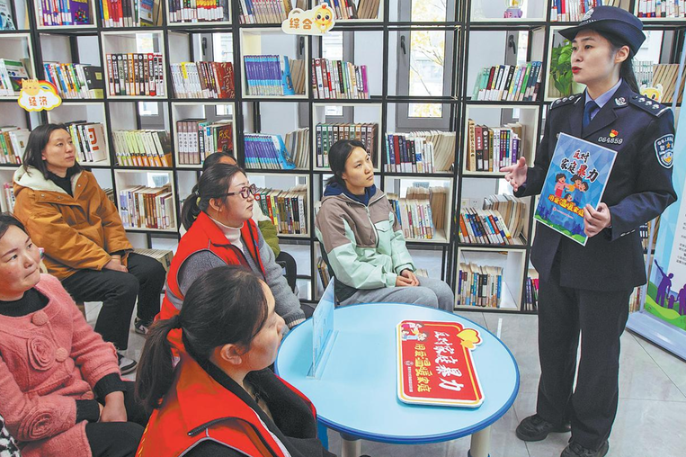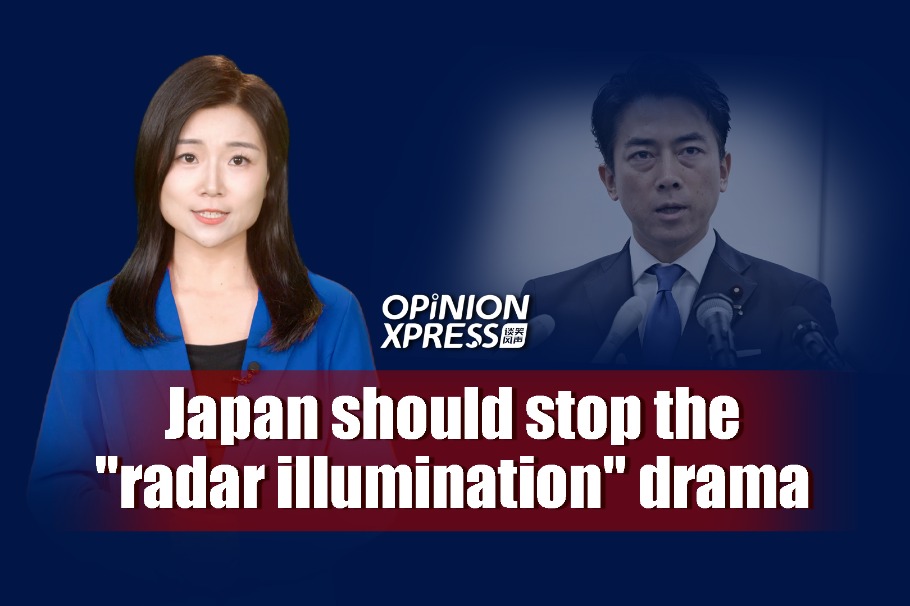Overseas hanfu clubs serve as cultural ambassadors
Traditional Chinese attire helps weave connections within the US, build bridges of understanding
By MINGMEI LI in New York | China Daily | Updated: 2024-04-10 07:02

Reaching beyond
For the group, hanfu is a hobby that brings people together, but individuals with similar backgrounds and interests get the chance to sit together and have deep, meaningful conversations about Chinese culture, beyond just taking photos.
Ming said that members of the club also share their interests in other aspects of Chinese culture which they exchange with each other. For example, they have a member who is very into Chinese tea culture and food culture; a member who loves ancient Chinese poetry; a member who is interested in analyzing the pronunciation of Ancient Chinese, and herself, who is an expert in Chinese history and folk traditions.
"During the Dragon Boat Festival, for instance, we engage in activities like pot-throwing and shooting arrows at the five poisons, promoting the simple yet profound Chinese belief in warding off evil.… Our aim is for everyone to enjoy these traditions," she said.
As the hanfu society expanded, their members have married and had children, giving rise to the hanfu second generation. This prompted them to organize hanfu parent-child events. The children have shown great enthusiasm for hanfu. Besides speaking Chinese and writing Chinese characters, Ming said she hopes younger generations will inherit traditional Chinese cultural attire and pass down the heritage.
"We wear hanfu, symbolizing our identity. Through community activities such as hanfu parades and hanfu try-ons, we want to enhance the sense of participation and influence of Chinese and Asian culture in the community," she said.
"We want to share with the entire community and exchange our culture, telling them more about this wonderful tradition. The grand festivals, like celebrating Christmas or New Year, even if they're not part of my ethnic tradition, still bring us joy and allow our families to bond more closely. These events also provide the community with opportunities to enjoy diverse cultures."
"It [hanfu] represents our AAPI identity and empowers us," she said, referring to Asian Americans and Pacific Islanders.
In California, the Northern California Hanfu Association recently hosted the Huazhao festival to celebrate the flower goddess' birthday, holding an event at the Filoli Historic House and Garden in the Bay Area of Woodside, California. The venue also hosted the diplomatic summit between President Xi Jinping and US President Joe Biden on Nov 15, during the Asia-Pacific Economic Cooperation forum.
Bridging gap
Liu Yuquan, the executive officer of the association, told China Daily that Filoli House has invited them to host the hanfu event again at the venue.
This place serves as a miracle for bridging the gap, easing tensions between China and the US, and improving relations, he said.
"Generally, the improvement of relations between two countries starts with culture. Traditional Chinese culture is something that both China and the US recognize and appreciate," he added.
"When we saw the news and found out that the leaders of both countries were meeting at the same venue, members of our hanfu club felt extremely surprised. For me, this place feels like a milestone, marking a fresh start in improving the 45-year relationship between China and the US. Therefore, we are even more eager to showcase hanfu and traditional Chinese culture," he said.
Belonging to the younger generation, Liu hopes to showcase cultural confidence through wearing hanfu. He said hanfu represents the clothing of Asian ethnic groups. As for the older generation of immigrants, they basically had no influence. No one paid attention to their culture, and no one cared about their identity. And sometimes even the people themselves will not wear their own ethnic clothing.
"But we want to wear it out, on various occasions," he said firmly.
The Northern California Hanfu Association is devoted to hanfu and cultural analysis, preparing an illustrated handbook to introduce the attire with pictures and English introductions to cater to more international fans.
From artifacts and attire to detailed accessories and literature, they have gathered knowledge of hanfu, from the pre-Qin period (pre-221 BC) to the Ming Dynasty. They use easily understandable English to introduce the evolution and development of clothing and culture, documenting every detail and providing explanations for the Chinese pinyin names of the garments to aid understanding.
"Whenever foreigners ask us, 'Hey, what's that clothing you're wearing?' sometimes even we struggle to translate or find specific terms for those clothing items. So, we want to undertake a project like this. It's not just a hobby; it also requires professionalism and accuracy," Liu said.
"We often present the glamorous and joyful aspects, but managing our community has its challenges. We hope that hanfu culture can garner more attention," he said.
























